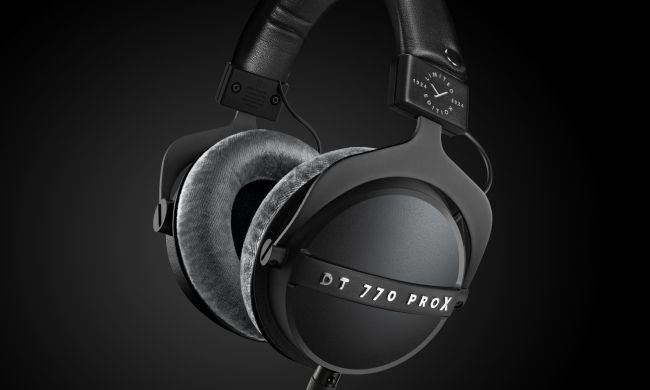Digital Trends may earn a commission when you buy through links on our site. Why trust us?
 Drop
Drop
Drop has dramatically lowered the price on its Drop+Grell OAE1 headphones — a set of open-back wired cans that Drop created with legendary headphone designer Axel Grell. The new version, known as the non-signature OAE1, has an official price of $299 ($100 less than the Drop+Grell OAE1 Signature release), but starting November 13, you can buy them for just $249.
A few changes have been made to the non-signature OAE1 to help achieve the new lower price, but none affect the sound quality. The new version still has the same unusual driver orientation (in front of and away from the ears), which Drop says “enables the sound field from the transducers to take advantage of the ear’s natural structure to direct sound into the ear canal.” The result, according to the company, is an ultra-expansive soundstage and a sound field that’s stunningly natural.
Impedance is still 38 ohms and the claimed frequency response is unchanged at 12Hz to 32,000Hz (-3 decibels) and 6Hz to 44,000Hz (-10db).
 Drop
DropThe shape and materials are identical, however, the new model wears a new color scheme: all-black, with dark gray accents. Drop has also eased up a bit on clamping force as some folks found the signature edition to be too tight. Drop has also added a left/right indicator inside the earcups to help you ensure you’re wearing the cans correctly.
Another set of indicators have been added to the 2.5mm cable connectors on each earcup. Apparently, some owners had trouble lining up the cable connectors due to the elongated rubber gaskets that cover the inputs.
Finally, you don’t get as many bells and whistles. Drop is only including a single-sided, 6-foot cable with the new cans — and it’s now single-ended, not double-ended. The Signature edition also shipped with a single-ended balanced cable. You can still get the balanced cable, but it’s now sold as a separate accessory.
It’s same story with the Signature’s travel case — it’s also an optional add-on for the non-signature model.
Before striking out on his own, Axel Grell was the driving force behind some of Sennheiser’s most-loved wired headphones including the HD580, HD600, HD650, HD800, and the HE-1.
Digital Trends didn’t review the Signature OAE1, however, reaction to the headphones among those who did seems to be mixed. Headphones.com felt the cans didn’t deliver on their promise of superior audio quality, while reviewers at Head-fFi.org appear to have had much better experiences.

Simon Cohen is a contributing editor to Digital Trends' Audio/Video section, where he obsesses over the latest wireless…
Beyerdynamic’s DT 770 Pro X offers premium features for less

If you need a robust, closed-back set of wired studio headphones, Beyerdynamic has a new option that could be very appealing. The DT 770 Pro X brings two of the best features of the more expensive $269 DT 700 Pro X down to a $199 price.
Based on the popular $169 DT 770 Pro, the new Pro X model gets a detachable cable system with a mini-XLR connection. The included 9.8-foot cable has 3.5mm jack at the other end, and comes with a 3.5mm-to-6.3mm adapter. You can swap it out for other lengths and other connector types, or simply replace it if it becomes damaged -- something you can't do on the DT 770 Pro.
Read more
Dali says its latest wireless headphones achieve electrostatic levels of clarity

Dali's latest wireless headphones, the Dali IO-12, will cost $1,299 when they hit retail later this month. That's a huge jump up from the company's previous offering, the $500 Dali IO-6, and it might even be a new record price for a set of wireless headphones, but Dali says the new noise-canceling cans are worth it because of the unusual technology that has been used to create the headphones' 50mm drivers.
The Danish company claims the IO-12 are the world's first to use a Soft Magnetic Compound (SMC) magnet system -- the same tech that Dali patented and used in its acclaimed floor-standing speakers. The primary benefit to SMC is a reduction of hysteresis -- distortion that can be caused by resistance to the voice coil in traditional magnet systems. Reducing hysteresis can lower uneven harmonic distortion "drastically," according to Dali.
Read more
Sony goes open-back with the MDR-MV1 studio monitors designed for spatial audio

Sony's Pro division has just released a new set of wired studio monitors, the $400 MDR-MV1, a set of open-back headphones that Sony says have been designed specifically to aid in the production of spatial audio. They'll be available later in April through Sony's Pro website and authorized Sony dealers.
Sony's professional monitors have been favorites of the music industry for years, and have also found a home among discerning audiophiles. But what makes the MDR-MV1 unusual as far as Sony cans go is their open-back design. With almost no exceptions (save for the discontinued Qualia 010 and MDR-SA5000), Sony heavily favors closed-back designs, which it uses on everything from the you can grab at any Walmart, all the way up to its top noise-canceling WH-1000XM5 and wired units that cost north of $1,000.
Read more




















 English (US) ·
English (US) ·